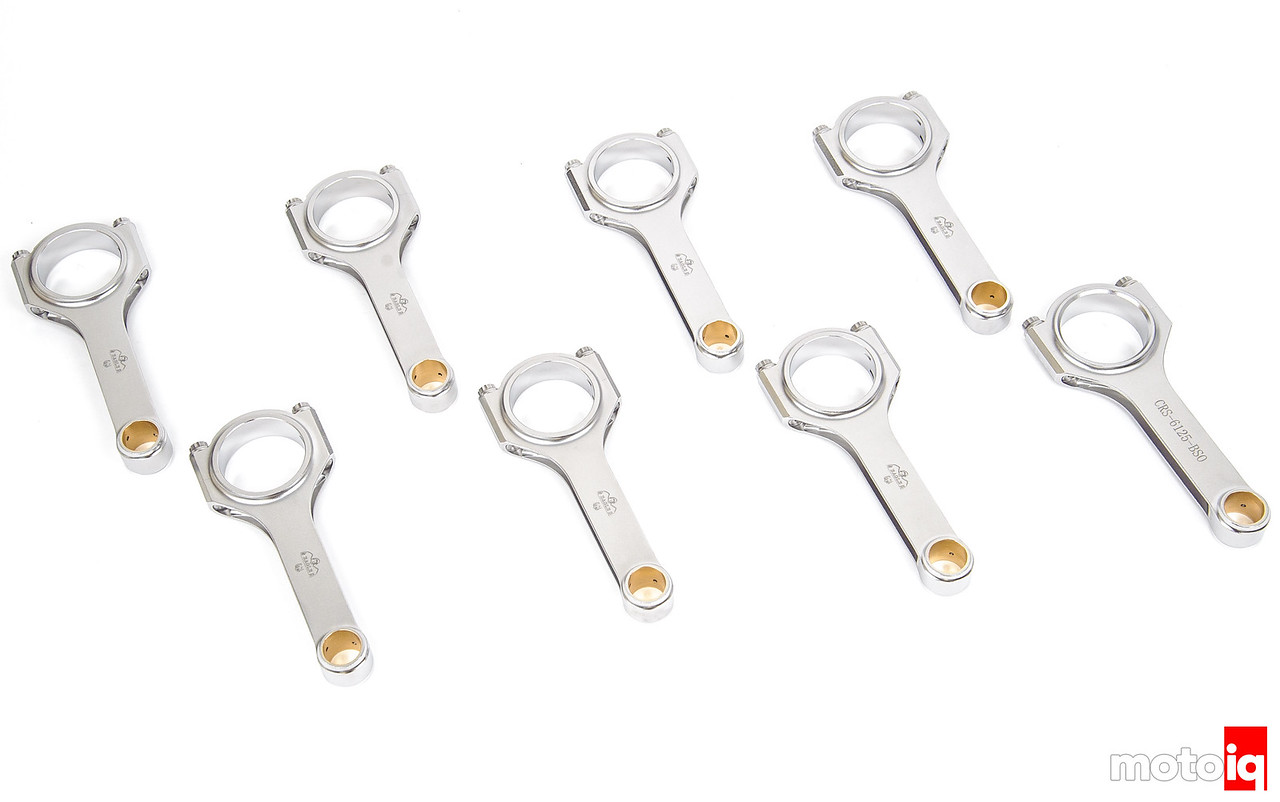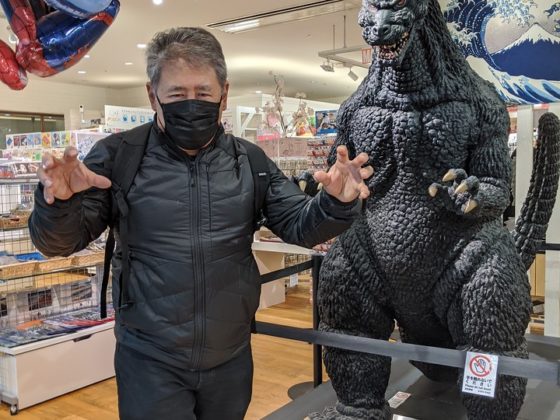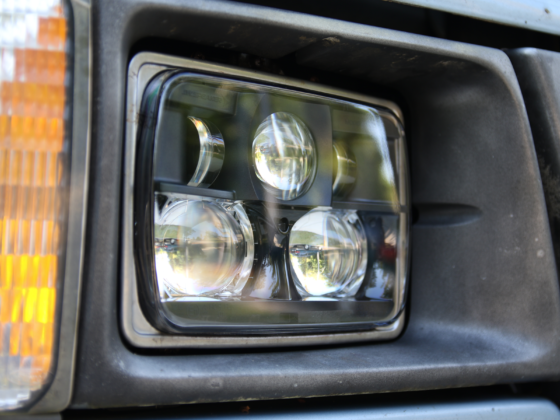
As machined from CP our pistons are balanced within one gram of each other. Our CP pistons feature a reduced skirt strut style forging. Some engine builders prefer this on a high revving natural aspirated engine accepting reduced friction and lighter weight for less thrust side support and possibly less stability in the bore. Our opinion is that an NA engine has less cylinder pressure and this is ok. Our pistons have a pressure accumulator grove between the compression rings. This reduces combustion pressure build-up in between the rings reducing flutter and improving the seal of the top ring and reducing back pressure and premature wear on the second ring.

The pistons feature a reduced boss for a lighter shorter piston pin. This is much lighter than a full-width boss that are favored in high cylinder pressure turbo engines and the light weight reduces inertia loading and works better for high revving naturally aspirated engines. As machined from CP our pistons are balanced within one gram of each other.

Our rings are a low tension 1.5mm steel nitrided for less friction and long life, top compression ring, a 1.5mm naiper profile second ring for fast break-in and good seal and a 3 mm oil control ring.

A short lightweight steel piston pin is used with a 0.180 wall thickness. This should be perfect for a high revving naturally aspirated engine.

We used King’s tough XPC bearings. Main bearing part number MB5013XPC and rod bearing part number CR807XPNC. The XPC bearing is a tri-metal type bearing. It has a steel backing with a lead, copper, tin intermediate layer. The intermediate layer has a high copper content which gives it outstanding load capacity. The intermediate layer is etched using the secure bond process which helps to assure adhesion to the pMax Black overlay. The overlay is fortified with a copper nano-particles based coating which further increases load-bearing capacity while reducing friction and providing improved wear. The main bearings feature Kings U-Groove technology with 90-degree walls on the oil feed grooves which give more bearing surface area. The oil feed holes that deliver oil to the grooves feature Kings ElliptiX oil feed hole design. The feed holes are chamfered and lengthened to help improve the oil feed which helps assure that the rod bearings have enough oil supply. King bearings are very tightly toleranced across the bearing face so the oil clearance is consistent across the crank journal. The main and rod bearings, use King’s RadiaLock dimensioning method to get the optimal crush clearance. This helps assure that the bearings will fit tightly in their bore for good heat transfer and good resistance to spinning. Unlike conventional bearings with tight crush, King bearings get clamped tightly in their bores without wear near their parting line due to their dimensioning process. The bearings also use Kings Eccentrix dimensioning method which takes the oil wedge into account when designing in the bearing material thicknesses. The thickness is varied to help form a more stable and consistent hydrodynamic layer of pressurized oil on the bearings face even at high RPM.




31 comments
What did you rev this engine to produce 650whp?
7200 rpm
What’s the part number for the block you used? TIA
12673475
Hello Mike
Would you able to build for me Good LSX engine for Drift?
Of course.
Of course, we can, it just takes money.
Mike, great information! I was wondering to build this engine as you did on your channel but running off regular premium gas, what modifications would I need to make? How much power loss could I expect as a result? I’m eager to get similar horsepower at the rear wheels. But I’m sure the current setup wouldn’t allow for premium gas.
You would need a lower compression ratio. You would probably lose 40 hp or so.
How much did this build cost you total ?
Price out all the parts including the block and every peice needed to have a plug and play motor. Multiply that number by 2.5 and it will be close.to actual cost.
Actually, it’s a lot less than that. The parts are expensive. Labor and machining are about $4000, WPC of most parts is about $2700
Price out all the parts including the block and every peice needed to have a plug and play motor. Multiply that number by 2.5 and it will be close.to actual cost.
Mike has $4000 plus $2700 parts = $6700
Pete’s rule of thumb parts [$2700] x 2.5 = $6750
Not too far off .
then there’s all the other stuff needed to have a runnin motor….Like Fuel ,Ign systems , ETC
There is no way the parts on this motor are only $2700! That is just the cost to WPC treat them.
What is the part number for the cam?
We don’t know, it was customer supplied and we didn’t recommend using it for drifting, not enough low end.
Will a 6.0l ls be able to use the same parts? I have a Pontiac G8 that I want to try and mimic this on.
Yes, but you won’t have quite the same displacement.
Thank you for the thorough explanation of everything. I wish more builders could/would break it all down as you have done!
hi mike, love your videos and information. can you please tell me the make and part # of the wrist pins you used in this build. thank you for your time.
Mike was $6700.00 around the actual price for plug and play
Mike said the labor, machining and WPC of most parts was $6700. That doesn’t include the cost of any of the parts. I would bet another $15000 in parts, my guess is $22000 to make it plug and play.
what about the core shift in the factory ls3 block?
what about it?
We notice some blocks are very thin on one side due to this. Some blocks are OK. Its just a cuation for people buying new blocks to do builds like this.
hello mike i am from holland and i want to build this engine for my volvo amazon 1966 project car
can i run this engine with 98 octane pump gas without race gas
or do i need to use another compresion ratio for that
i am planing to use it for street and strip use
hope you can help me
Yes you need to reduce the compression to around 11.5:1
Hi Mike. Love the content just one simple Question, Did you have the 6.2 Ls Bored over to a 6.8 liter for The Stroker kit or the stroker kit gave it the displacement to a 414 cubic inch?
It’s done with stroke, aluminum LS blocks can’t be bored out much, we said exactly what we are doing in the third paragraph, don’t be lazy, read!
Hi Mike. What oil weight do you recommend for drift ls3 with tight bearing clearances. Is 15w50 will be good choice or its too heavy ?
Thank you
Sure it is what we run.